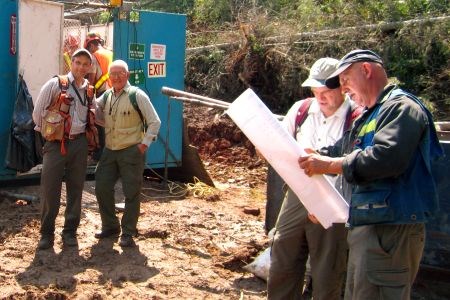There's been a tremendous push in the last few years for rare earth elements, (REE), and in Canada, Thunder Bay-based Rare Earth Metals Inc., has made significant moves to mine them.
China produces 95 per cent of the world's supply of REE, with one of the biggest mines situated in Mongolia.
“China is the dominant exporter for rare earth elements, but in the last two-and-a-half years, they've been cutting back substantially with their exports,” said Michael Stares, president and CEO of Rare Earth Metals Inc. “Their mining techniques are less environmentally friendly, and most of the time, they leave big scars on the ground, and I would think that they're just trying to clean their act up right now.”
Cutbacks from China have opened some doors in North America, and Rare Earth Metals Inc., was created to jump on those opportunities.
The company has four properties currently at work; three in Northern Ontario in Kapuskasing, Marathon, and Sturgen Falls, and one in Labrador.
What's unique about its Clay Howells project in Kapuskasing is the many similarities it has with the dominant mine in Mongolia.
Both mines are carbonatite-hosted iron deposits, with rare earth credits.
REEs can only be found in two types of rocks: carbonatite and peralkaline, one of 17 found in the periodic table.
Because of their unique magnetic, fluorescent and chemical properties, they are key materials used in modern innovation.
“They're pretty special because of their magnetic, electronic and optical qualities,” said Stares. “They're used in all kinds of high-tech instruments from iPads to windmills.
Clay Howells was the company's first project started in 2009. With two rounds of diamond drilling under their belt, the company is currently analyzing the preliminary data.
“(The company) has been very open with the community, and has participated with the chamber of commerce for the past two years giving the community updates on their project,” said Andre Robichaud, project coordinator for the town of Kapuskasing.
The work in the Kapuskasing area has created some economic spinoffs with Aboriginal involvement and jobs for locals.
According to Robichaud, the company has spent more than $300,000 within the community over the past three years.
“It's been a good working relationship so far,” said Robichaud. “If you go back five to 10 years, nobody was going after those metals.”
The company recently began working on a fourth project just north of Sturgeon Falls, which is also a carbonatite-hosted rare earth deposit.
“We have drilled a number of holes down there,” said Stares. “We're aggressively working on this project and it looks to be very promising.”
Stares said that hopefully he can find some resources with one of the company's projects and create some sort of economic growth.
“The best case scenario, particularly with the Clay Howells site, is we get some resources and maybe get something into production,” he said. “It doesn't happen overnight, but slowly and surely we're piecing the puzzle together.”




